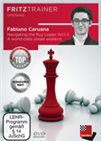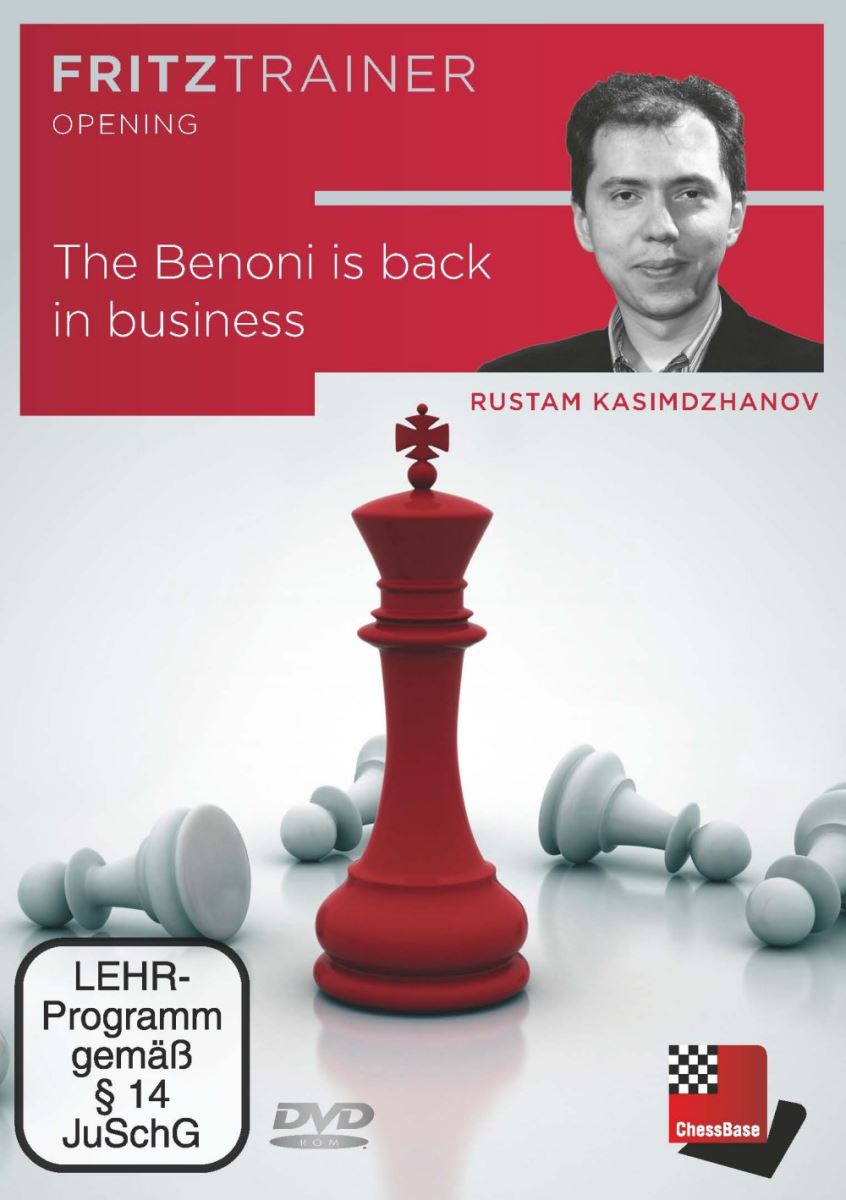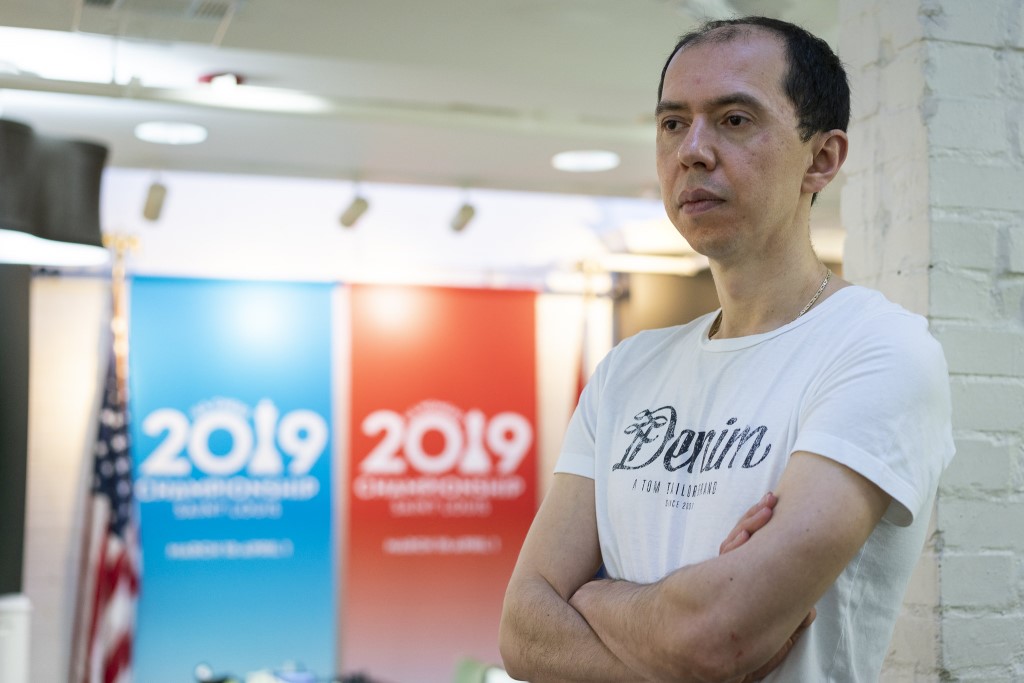“I’ve spent my whole life in chess”
Those who followed closely the World Chess Championship matches since 2008 until 2018 have surely heard of him. Rustam Kasimdzhanov supported Vishy Anand’s team in 2008, 2010 and 2012, and helped Fabiano Caruana in his outing against Magnus Carlsen in 2018. And not by mere chance — the 40-year-old Uzbekistani grandmaster is a renowned opening expert.
Kasimdzhanov recently launched a FritzTrainer DVD called “The Benoni is back in business”. In his review of the DVD, Roven Vogel noted:
After working through almost six hours of video material you have a good foundation to study the various lines in more detail, but every viewer should know that there is still a lot of analytical work to do if you want to play this opening seriously. But, all in in all, the Benoni indeed seems to be ‘back in business’!
For some years now, Kasimdzhanov has been living in Germany, near Bonn. His strong practical skills as a chess player came to the fore when he won the FIDE Knockout World Championship in Tripoli, Libya in 2004. Nowadays, he still plays for OSG Baden-Baden in the German League and participates in individual tournaments once in a while.
His low-key demeanour may prompt people to think that he is not a fighter at heart, but in an interview with André Schulz right after Caruana was defeated in London, Kasimdzhanov mentioned:
Some people came to me to congratulate for the good work. I don't know why. After all, our work as seconds usually remains invisible. I have already worked as a second a couple of times, including World Championship matches. It may sound a bit immodest but until now I have won all the World Championship matches in which I was a second. The feeling of defeat is new for me.
Rustam Kasimdzhanov answers seven questions, about the Benoni, his work as a second and the new challenges he has faced during the coronavirus pandemic.
 The Ruy Lopez is one of the oldest openings which continues to enjoy high popularity from club level to the absolute world top. In this video series, American super GM Fabiano Caruana, talking to IM Oliver Reeh, presents a complete repertoire for White.
The Ruy Lopez is one of the oldest openings which continues to enjoy high popularity from club level to the absolute world top. In this video series, American super GM Fabiano Caruana, talking to IM Oliver Reeh, presents a complete repertoire for White.
Ioan-Cristian Chirila, Rustam Kasimdzhanov and Fabiano Caruana | Photo: Nikolai Dunaevsky / World Chess
CC: You've presented many new ideas in your recent DVD on the Benoni. As an expert theoretician and given how prevalent computer-assisted preparation has become, what would you say is the shelf life of a new idea? How long can you keep it a secret without someone else finding the same line in their analyses?
RK: It is a very interesting question, especially in our times. The answer probably depends a bit on the level you’re playing at — at the highest level the assumption often is that your rivals will have found similar ideas. In reality, however, we see many instances of a well-built repertoire, lasting for many years. Most important is how well you know your line
 You recently played an online tournament on ICC and have remained active by sometimes playing in the Bundesliga. In practical terms, when having the black pieces, what variation of the Benoni do you fear the most? Why?
You recently played an online tournament on ICC and have remained active by sometimes playing in the Bundesliga. In practical terms, when having the black pieces, what variation of the Benoni do you fear the most? Why?
Currently, I would say, the Benoni is doing well in all the sharp lines. Having studied them, I would pay most attention to the lines that are more positional — like Nd2 classical or g3. These lines, despite not challenging black immediately, have quite some venom and provide an opportunity to search for new ideas.
Is the Benoni an opening that can exclusively be played by dynamic players? Or can a more positional player also employ it somehow?
I think currently the opening is developed enough for any player of any style to use it :)
How have you spent your time during the Corona crisis?
I had many phases, including just resting, but also phases of a lot of work. I haven’t traveled anywhere in more than months, but since the crisis isn’t really going anywhere, I will probably also pick up some activity which will involve some trips, first within Germany.
Are you still helping Fabiano during his participation in online tournaments? Is it more or less challenging to prepare for classical tournaments in comparison to rapid tournaments?
Yes. It is just different though — you try to find ideas which you feel will work in rapid/blitz. To be fair, that’s pretty much anything :)
Fabiano is a full point behind co-leaders Nepomniachtchi and Vachier-Lagrave in the Candidates Tournament that had to be stopped after seven rounds. Would you prefer for the tournament to resume as soon as possible? How much time do you think FIDE should give the players to prepare before the event resumes?
I don’t see any good scenarios there right now. Of course, some time before the event would be nice, at least to gather some thoughts and energy.
If you could organize a classical tournament (six-player double round robin) and invite any active player in the world, who would you invite and why?
I’ve spent my whole life in chess, and made many friends. I could only try to answer your question, if I could organize a big Swiss event :)
On top level the Benoni is a rare guest but with this DVD Rustam Kasimdzhanov this might change. New ways and approaches in most lines and countless improvements of official theory will show you how to play this opening at any level with success.
Links



















 You recently played
You recently played 




